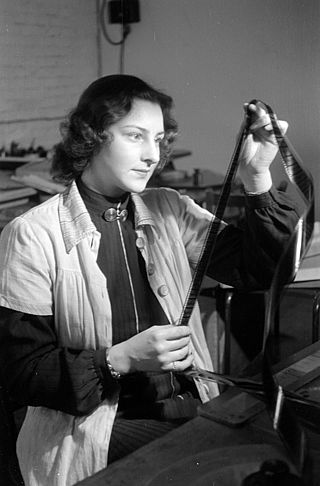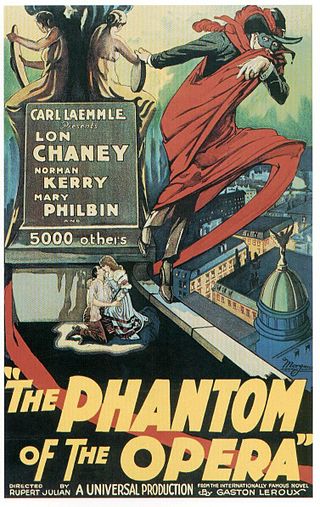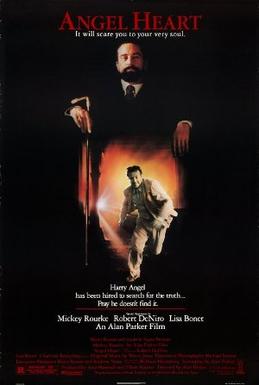A director's cut is an edited version of a film that is supposed to represent the director's own approved edit in contrast to the theatrical release. "Cut" explicitly refers to the process of film and game editing; in preparing a film for release, the director's cut is preceded by the assembly and rough editor's cut and usually followed by the final cut meant for the public film release and video game release.

Film editing is both a creative and a technical part of the post-production process of filmmaking. The term is derived from the traditional process of working with film which increasingly involves the use of digital technology. When putting together some sort of video composition, typically, you would need a collection of shots and footages that vary from one another. The act of adjusting the shots you have already taken, and turning them into something new is known as film editing.

The Song Remains the Same is a 1976 concert film featuring the English rock band Led Zeppelin. The filming took place during the summer of 1973, during three nights of concerts at Madison Square Garden in New York City, with additional footage shot at Shepperton Studios. The film premiered three years later on 20 October 1976 at Cinema I in New York, on 21 October 1976 at Fox Wilshire in Beverly Hills, and at Warner West End Cinema in London two weeks later. It was accompanied by a soundtrack album of the same name. The DVD of the film was released on 31 December 1999.
Margaret Booth was an American film editor. In a career lasting seven decades, Booth was most associated with Metro-Goldwyn-Mayer (MGM).
A blooper is a short clip from a film or video production, usually a deleted scene, containing a mistake made by a member of the cast or crew. It also refers to an error made during a live radio or TV broadcast or news report, usually in terms of misspoken words or technical errors. The term blooper was popularized in the 1950s and 1960s in a series of record albums produced by Kermit Schafer entitled Pardon My Blooper, in which the definition of a blooper is thus given by the record series' narrator: "Unintended indiscretions before microphone and camera."

The Phantom of the Opera is a 1925 American silent horror film adaptation of Gaston Leroux's 1910 novel Le Fantôme de l'Opéra, directed by Rupert Julian and starring Lon Chaney in the title role of the deformed Phantom who haunts the Paris Opera House, causing murder and mayhem in an attempt to make the woman he loves a star. The film remains most famous for Chaney's ghastly, self-devised make-up, which was kept a studio secret until the film's premiere. The picture also features Mary Philbin, Norman Kerry, Arthur Edmund Carewe, Gibson Gowland, John St. Polis and Snitz Edwards. The last surviving cast member was Carla Laemmle (1909-2014), niece of producer Carl Laemmle, who played a small role as a "prima ballerina" in the film when she was about 15 years old. The film was released on September 6, 1925, premiering at the Astor Theatre in New York. The film's final budget was $632,357.

Angel Heart is a 1987 American neo-noir psychological horror film, an adaptation of William Hjortsberg's 1978 novel Falling Angel. The film was written and directed by Alan Parker, and stars Mickey Rourke, Robert De Niro, Lisa Bonet, and Charlotte Rampling. Harry Angel (Rourke), a New York City private investigator, is hired to solve the disappearance of a man known as Johnny Favorite. His investigation takes him to New Orleans, where he becomes embroiled in a series of brutal murders.

In show business, the green room is the space in a theatre or similar venue that functions as a waiting room and lounge for performers before, during, and after a performance or show when they are not engaged on stage. Green rooms typically have seating for the performers, such as upholstered chairs and sofas.
The Five Doctors is a special feature-length episode of the British science fiction television series Doctor Who, produced in celebration of the programme's 20th anniversary. It had its world premiere in the United States, on the Chicago PBS station WTTW and various other PBS member stations on 23 November 1983, the anniversary date. It was transmitted on BBC1 in the United Kingdom two days later.
In filmmaking, dailies or rushes are the raw, unedited footage shot during the making of a motion picture. The term "dailies" comes from when movies were all shot on film because usually at the end of each day, the footage was developed, synced to sound, and printed on film in a batch for viewing the next day by the director, selected actors, and film crew members. After the advent of digital filmmaking, "dailies" were available instantly after the take and the review process was no longer tied to the overnight processing of film and became more asynchronous. Now some reviewing may be done at the shoot, even on location, and raw footage may be immediately sent electronically to anyone in the world who needs to review the takes. For example, a director can review takes from a second unit while the crew is still on location or producers can get timely updates while travelling. Dailies serve as an indication of how the filming and the actors' performances are progressing. The term was also used to describe film dailies as "the first positive prints made by the laboratory from the negative photographed on the previous day".
A script supervisor is a member of a film crew who oversees the continuity of the motion picture including wardrobe, props, set dressing, hair, makeup and the actions of the actors during a scene. The notes recorded by the script supervisor during the shooting of a scene are used to help the editor cut the scene. They are also responsible for keeping track of the film production unit's daily progress. The script supervisor credit is typically in the closing credits of a motion picture. Script supervisors are a department head and play a crucial role in the shooting of a film. It is the script supervisor's job to monitor the camera shots, seeking to maintain coherence between the scenes.
A deleted scene is footage that has been removed from the final version of a film or television show. There are various reasons why these scenes are deleted, which include time constraints, relevance, quality or a dropped story thread, and can also be due to budgetary concerns. A similar occurrence is offscreen, in which the events are unseen.

Sweeney Todd: The Demon Barber of Fleet Street is a 2007 musical slasher film directed by Tim Burton from a screenplay by John Logan, based on the stage musical of the same name by Stephen Sondheim and Hugh Wheeler, which in turn is based on the 1970 play Sweeney Todd by Christopher Bond. The film retells the melodramatic Victorian tale of Sweeney Todd, an English barber and serial killer who, while seeking revenge on Judge Turpin who wrongfully convicted and exiled him to steal his wife, murders his customers and, with the help of his accomplice, Mrs. Lovett, processes their corpses into meat pies.

Superman II: The Richard Donner Cut is a 2006 re-edited director's cut of the 1980 superhero film Superman II. It is a sequel to Richard Donner's 1978 film Superman, based on the DC Comics superhero of the same name, and stars Gene Hackman, Christopher Reeve, and Marlon Brando. This alternate cut was edited by Michael Thau and was overseen and completed by Donner himself. It features a significant amount of discarded footage, alternate takes, and story elements not featured in the theatrical version.
In the post-production process of film editing and video editing, a cut is an abrupt, but usually trivial film transition from one sequence to another. It is synonymous with the term edit, though "edit" can imply any number of transitions or effects. The cut, dissolve, and wipe serve as the three primary transitions. The term refers to the physical action of cutting film or videotape, but also refers to a similar edit performed in software; it has also become associated with the resulting visual "break".

The Kids Are Alright is a 1979 rockumentary film about the English rock band the Who, including live performances, promotional films and interviews from 1964 to 1978. It notably features the band's last performance with long-term drummer Keith Moon, filmed at Shepperton Studios in May 1978, three months before his death.

The Cutting Edge: The Magic of Movie Editing is a 2004 documentary film about the history and art of film editing, directed by filmmaker Wendy Apple. The film brings up many topics, including the collaborative nature of filmmaking, female representation in the editing field, and emerging technologies of the 21st century. Clips shown in the documentary were taken from feature films of the past century noted for their innovations in editing, ranging from 1903's Life of an American Fireman to 2003's Cold Mountain.

A film – also called a movie, motion picture, moving picture, picture, photoplay or (slang) flick – is a work of visual art that simulates experiences and otherwise communicates ideas, stories, perceptions, feelings, beauty, or atmosphere through the use of moving images. These images are generally accompanied by sound and, more rarely, other sensory stimulations. The word "cinema", short for cinematography, is often used to refer to filmmaking and the film industry, and the art form that is the result of it.

Deleted Scenes from the Cutting Room Floor is the debut album by Dutch singer Caro Emerald. The album was conceived, written and produced as a studio project by David Schreurs, Vincent Degiorgio, Jan van Wieringen and Caroline van der Leeuw, and released in the Netherlands with Emerald as the starring artist on 29 January 2010 on their own label Grandmono.

The Thief and the Cobbler is an unfinished animated fantasy film co-written and directed by Richard Williams. Originally devised in the 1960s, the film was in and out of production for nearly three decades due to independent funding and ambitiously complex animation. It was finally placed into full production in 1989 when Warner Bros. agreed to finance and distribute the film. When production went over budget and behind schedule, it was heavily cut and hastily re-edited by producer Fred Calvert without Williams's involvement. It was eventually released by Allied Filmmakers in 1993 with the title The Princess and the Cobbler. Two years later, Miramax Films, which was owned by Disney at the time, released another re-edit titled Arabian Knight. Both versions of the film performed poorly at the box office and received mixed reviews.











